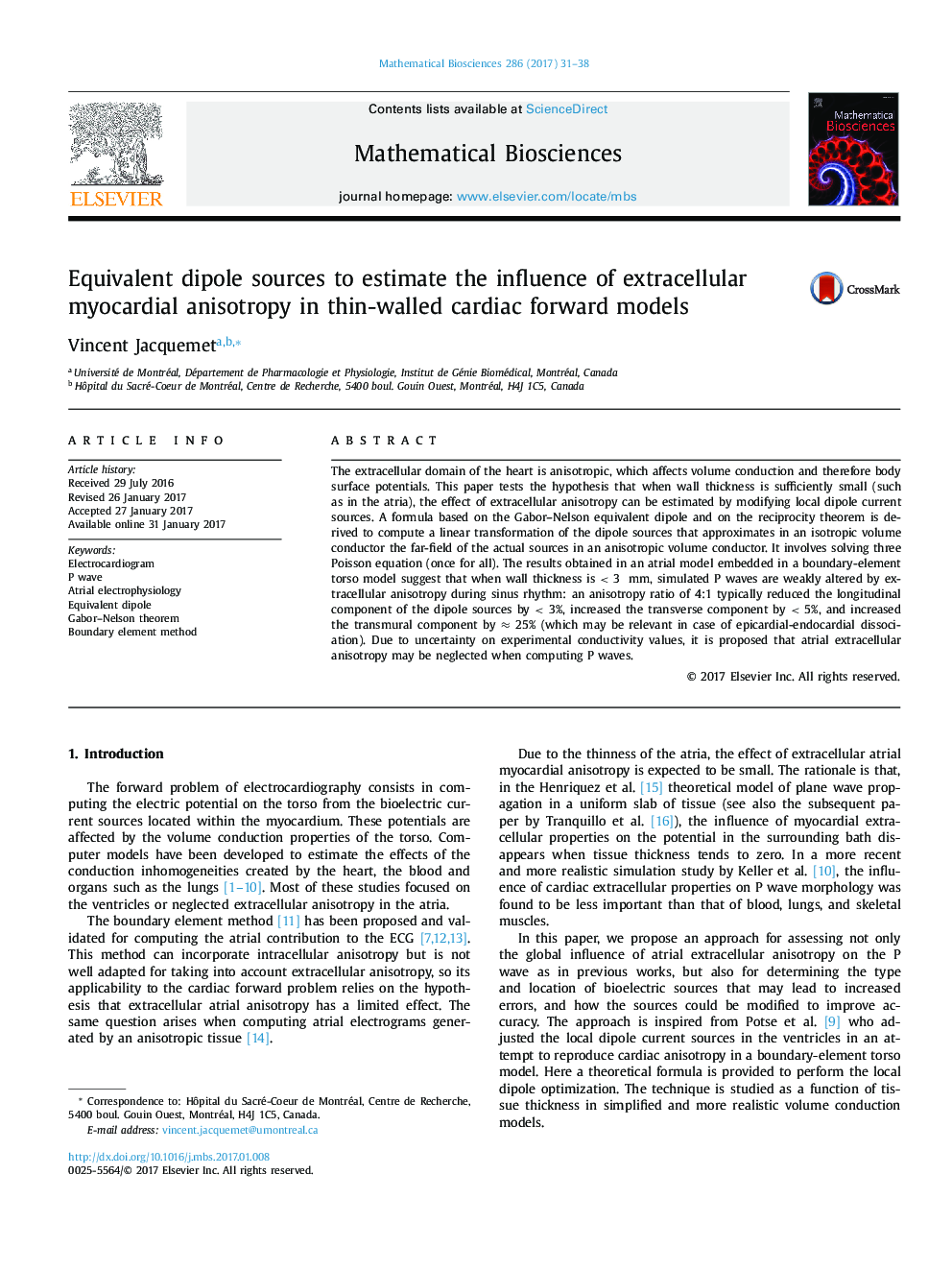| Article ID | Journal | Published Year | Pages | File Type |
|---|---|---|---|---|
| 5760388 | Mathematical Biosciences | 2017 | 8 Pages |
Abstract
The extracellular domain of the heart is anisotropic, which affects volume conduction and therefore body surface potentials. This paper tests the hypothesis that when wall thickness is sufficiently small (such as in the atria), the effect of extracellular anisotropy can be estimated by modifying local dipole current sources. A formula based on the Gabor-Nelson equivalent dipole and on the reciprocity theorem is derived to compute a linear transformation of the dipole sources that approximates in an isotropic volume conductor the far-field of the actual sources in an anisotropic volume conductor. It involves solving three Poisson equation (once for all). The results obtained in an atrial model embedded in a boundary-element torso model suggest that when wall thickness is < 3Â mm, simulated P waves are weakly altered by extracellular anisotropy during sinus rhythm: an anisotropy ratio of 4:1 typically reduced the longitudinal component of the dipole sources by < 3%, increased the transverse component by < 5%, and increased the transmural component by â 25% (which may be relevant in case of epicardial-endocardial dissociation). Due to uncertainty on experimental conductivity values, it is proposed that atrial extracellular anisotropy may be neglected when computing P waves.
Related Topics
Life Sciences
Agricultural and Biological Sciences
Agricultural and Biological Sciences (General)
Authors
Vincent Jacquemet,
